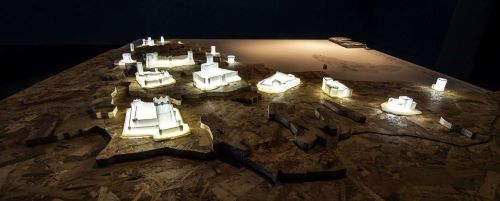
The exhibition "Guardians of Stone. The castles of Alicante" organised by the MARQ has closed its doors in the Castle of Santa Bárbara in Alicante after receiving 107,200 visitors since its inauguration last March.
This exhibition marks the beginning of the collaboration between the Alicante City&Beach Tourist Board and the CV MARQ Foundation. The proposal pays tribute to the 230 castles built throughout the province with the aim of disseminating the rich heritage of Alicante. Since 2015, when it began its tour, the exhibition has visited 14 towns and its next destination is the Miguel Hernández Centre in Albatera.
The deputy for Culture, Juan de Dios Navarro, said that "with this exhibition, the Provincial Council is making the heritage and cultural value of Alicante's castles built over 500 years available to society". The province of Alicante has been, especially in medieval times, a perpetual border where the need to wall and fortify as a measure of protection and control has had a huge impact on the territory, which is why this exhibition has shown the enormous treasure of historical, heritage and tourist value that reflect our castles.
The 84 castles explained on exhibition panels are grouped into five routes: La Clau del Regne, in l'Alacantí, the castles of the inland border in the Vinalopó Valley, the castles of the Mountain in L'Alcoià-Comtat, the castles of Tudmir, in the Vega Baja, and those of the Frontera del Miedo, in the Marinas. Curated by José Luis Menéndez, 'Castles of Stone' is sponsored by the Banco Sabadell Foundation and the design of the museography, which won the Emporia de Oro award for the best travelling exhibition in Spain in 2015, is by the architect Ángel Rocamora.
Visitors were able to visit the province's fortifications, most of them of a military nature, but also shelters such as the towers in the market gardens, in a historical journey from the late medieval period to the modern age. And in the case of the exhibition in the Castle of Santa Bárbara, two milestones have been added, which have set it apart from other itineraries, such as the reconstruction of the Bastion of La Mina, already completed, and the future Interpretation Centre of the Torres de la Huerta in the Sarrió Tower, which will be carried out with European funding and through a collaboration agreement with the CV MARQ Foundation.
